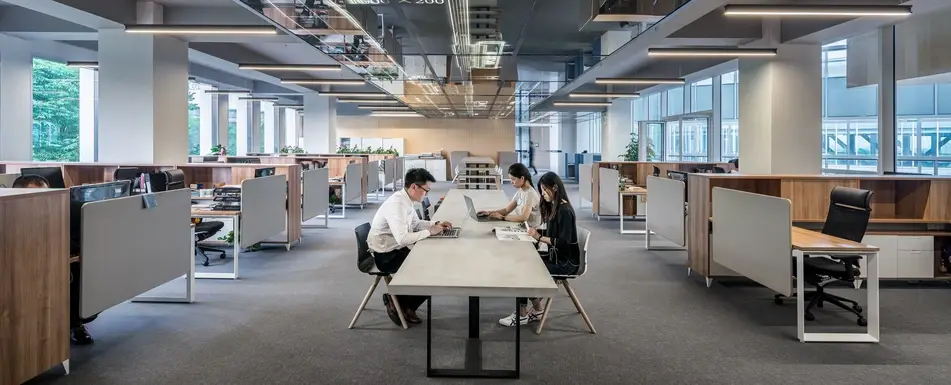5 Considerations for a Truly Inclusive Office Space

Is the design of your office inclusive? It may comply with federal regulations for accessibility, but does it really accommodate employees of all ages, abilities, and genders? From lighting to bathroom signage, the design of today’s modern office should match your organization’s stated diversity and inclusion goals.
Accessibility and DEI
Diversity, equity, and inclusion (DEI) goals have gained prominence in organizational missions. From basics like diversity in hiring and a push for more equitable representation in leadership, to awareness of inclusivity in the language we use, social impact organizations are recognizing the need for more representative and inclusive workplaces. It’s important, then, that the actual physical space be accessible and inclusive for all employees as well.
The Americans with Disabilities Act (ADA) requires that workplaces provide reasonable accommodations for applicants and employees with disabilities. However, offices with less than 15 employees do not have to comply. In addition, these accommodations are for individuals who meet specific criteria for having a disability. But the idea of inclusivity should go beyond accommodations for disabilities—it should mean that the office environment is accessible and welcoming for everyone, regardless of age, gender identity, background, or ability.
Five considerations for every office space
The concept of inclusive or universal design specifically aims to avoid putting the focus on people with special needs. Instead, it envisions a space that can accommodate everyone and doesn’t require many modifications after the fact. A well-designed, inclusive office has a positive impact on the health and wellbeing of all employees and should include:
- Promoting gender inclusivity: Having a gender-neutral bathroom available allows people of all gender identities to feel comfortable.
- Vision considerations: Designing workspaces with sufficient overhead and task lighting supports the vision health of both older and younger employees. Reducing glare from windows, surfaces, and screens is also beneficial to everyone’s comfort.
- Furniture choices for physical wellbeing: Offering standing desks, adjustable chairs, and other types of ergonomic furniture to all employees regardless of medical need can help alleviate pain and prevent injury.
- Workspace options for improved focus: Having multiple workspace options (like quiet areas and communal areas) can be helpful for someone with ADHD or sensory processing issues. It can also provide a welcome change of pace for any employee in need of a different environment.
- Office safety: Designing accessible storage areas for people of all heights prevents falls and accidents. Installing visual fire alarms with both visual and audible alarm signals ensures that all employees can be safely alerted in the case of an emergency.
Major benefits, minor costs
Inclusive office design can help an organization move closer to its DEI goals, attract more diverse candidates, and promote an inclusive culture. The benefits of planning an inclusive office space are therefore likely to outweigh the costs: diverse companies have been shown to be more profitable, and even low-cost accommodations for ADA compliance result in a positive effect on overall productivity, morale, and safety. Incorporating universal design elements from the start saves even more money over more costly retrofitting for accommodations.
Given the benefits of inclusive office designs, it’s time for more employers to take a closer look at the spaces they provide.
***
Is your office space inclusive? Share your thoughts on social media.
Lakshmi Hutchinson is a freelance writer with experience in the nonprofit, education, and HR fields. She is particularly interested in issues of educational and workplace equity, and in empowering women to reach their professional goals. She lives in Glendale, California with her husband, twin girls, and tuxedo cat.


